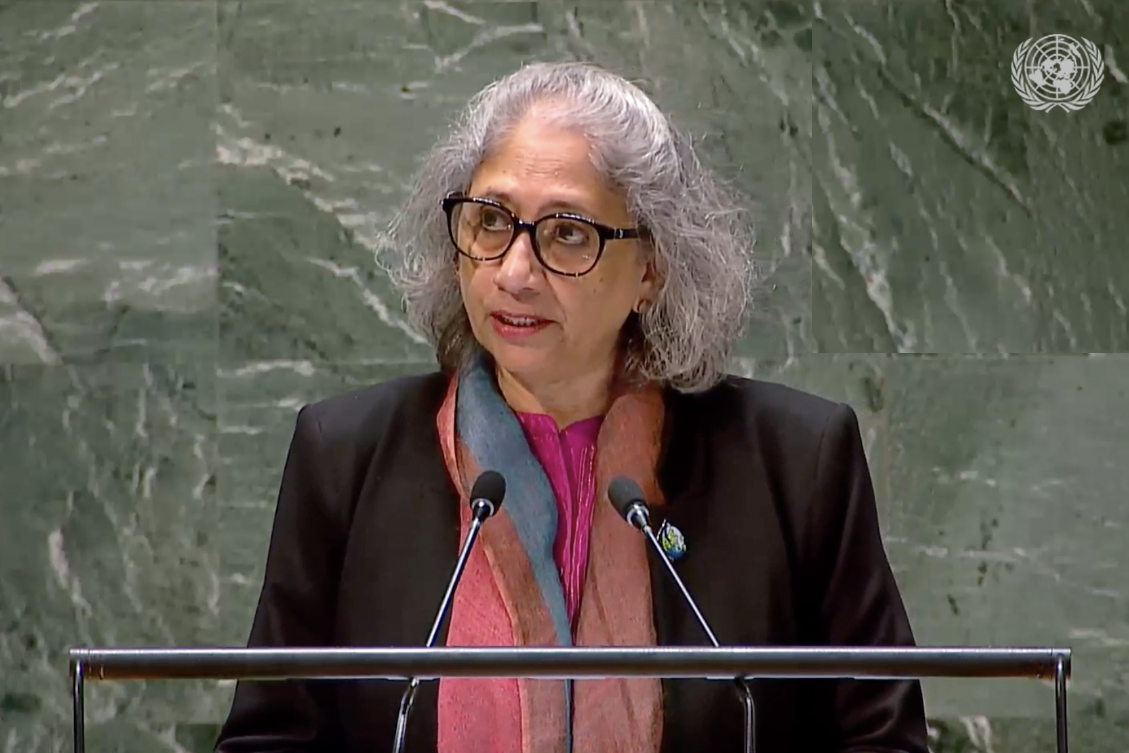
C3S: July 22 hottest day in recent history
July 22 was the hottest day on earth in recent history, according to the Copernicus ...

Ligia Noronha , Head of New York Office of the United Nations Environment Program (UNEP), said there are four key areas in which the G7 nations can take concrete action in addressing climate change.
She made the remarks while delivering a speech on behalf of UNEP Secretary General Inger Andersen at G7 Environment ministers session.
One, plastics:
As mentioned this morning, UNEA two years ago green-lit negotiations for an internationally legally binding instrument on plastic pollution that covers the full lifecycle of plastics. The fourth round of these negotiations are wrapping up in Ottawa today, she said.
“The goal is to end plastic pollution, including in the marine environment. To achieve this, we must eliminate unnecessary single use and short-lived plastic, roll out refill and reuse models and produce less problematic plastic,” she said.
“Design for circularity, invest in solid waste management and recycling – so that we can use, reuse and recycle resources more efficiently. All while ensuring a just transition and space for the private sector to thrive in new sustainable markets. And, of course, we will need to address chemicals of concern,” she highlighted.
“As I said earlier, we will only achieve this with an ambitious global deal. This is where the G7 can lead the way. While INC-4 may end today, the work does not stop. We ask for your active political engagement in the process, including constructive engagement at the intersessional work that will follow the Ottawa talks. Likewise, a political lift will be required to strike a meaningful deal at the final round of talks in South Korea. Our request is that the G7 sends ministerial delegations to Busan and encourages other countries to do the same,” she said.
“If we get this multilateral agreement right, we will bring huge benefits to human and ecosystem health. We will deliver justice, through new jobs and protect communities such as waste-pickers. Businesses are calling for global rules and our economies will also benefit. Some 95 per cent of the material value in plastic packaging is lost to the global economy after one use,” she added.
Two, buildings and construction:
There is no credible path to addressing climate change and nature loss without a shift in the building and construction sector. Half of the buildings that will exist by 2050 have not been built, mainly in the Global South.
“So, we have an opportunity to reimagine buildings to prioritize resilience, renovation and reuse, renewable energy, and low-carbon construction, all while addressing social inequalities,” she said.
“At the Global Buildings and Climate forum in March in Paris, we heard solutions to the challenge of doubling energy efficiency. This includes developing building energy codes aligned with Zero-Emissions Building, increasing the rate and impact of retrofitting existing buildings, use of energy efficient appliances and promoting open standards,” said added.
Three, textiles and fashion:
Fast and cheap fashion has taken over the world. As many people struggle with the cost-of-living crisis, this is understandable. But the models still don’t make sense. Less than one percent of material used to produce clothing is recycled. Over 3.3 billion tonnes of greenhouse gases are emitted across the value chain per year, more than all international flights and maritime shipping combined, she said.
Switching to circular business models – including resale, rental, repair and refurbishment – would benefit the environment and contribute up to US$700 billion to the economy, she added.
Four, minerals and metals:
“The same approach applies to the minerals and metals we need for the energy transition. Products need to be designed for repair, remanufacturing, recovery and recycling to keep minerals and metals in the economy instead of gouging them from the Earth and throwing them away,” she asserted.
This will also reduce pressure on people and communities who live and work under poor conditions. Protect the rights and land of Indigenous Peoples. And ensure that these minerals can be used and reused far into the future.
Reducing the resource intensity of key economic sectors and adopting circular models is central to achieving the Sustainable Development Goals. To hitting the targets set by global agreements on climate, biodiversity, chemicals and pollution.
“We have compelling evidence of the positive impact of resource efficiency and circularity. True circularity is not just recycling. Yes, true circularity ensures that what goes out comes back in. But it also ensures that less goes in through refuse and reduce. And that what goes in has value that is retained in the economy for as long as possible. To achieve this, we need to take a life cycle approach to transformations,” she said.
July 22 was the hottest day on earth in recent history, according to the Copernicus ...
Google has engaged in partnership with DHL to utilize the DHL Express GoGreen Plus service ...
Mars has announced registering a record 8% greenhouse gas (GHG) emissions reduction against its 2015 ...


اترك تعليقا